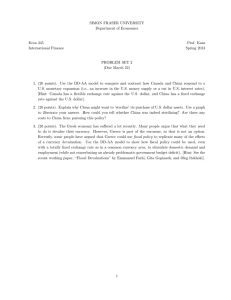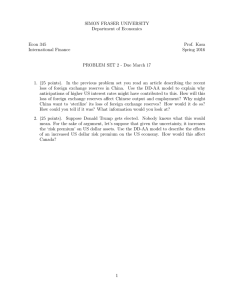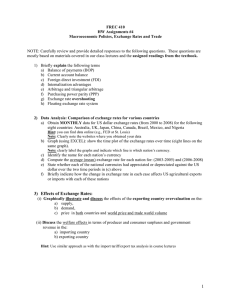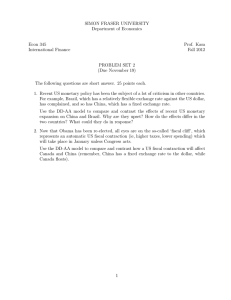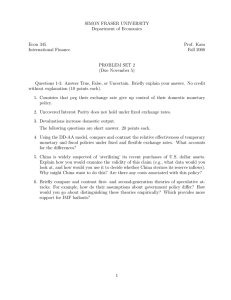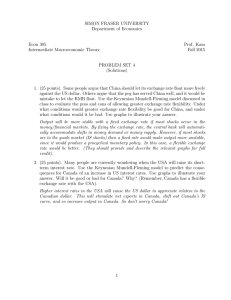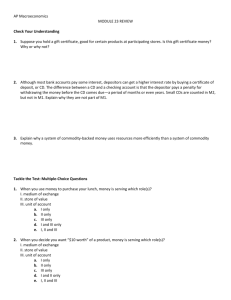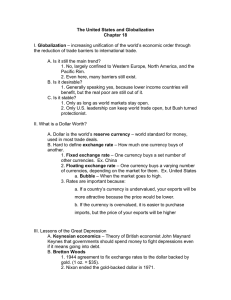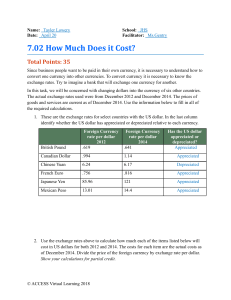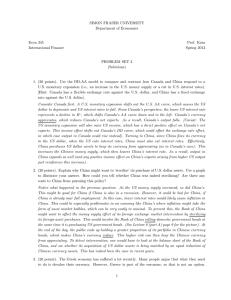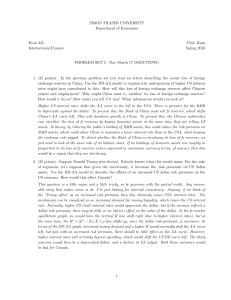SIMON FRASER UNIVERSITY Department of Economics Econ 345 Prof. Kasa
advertisement
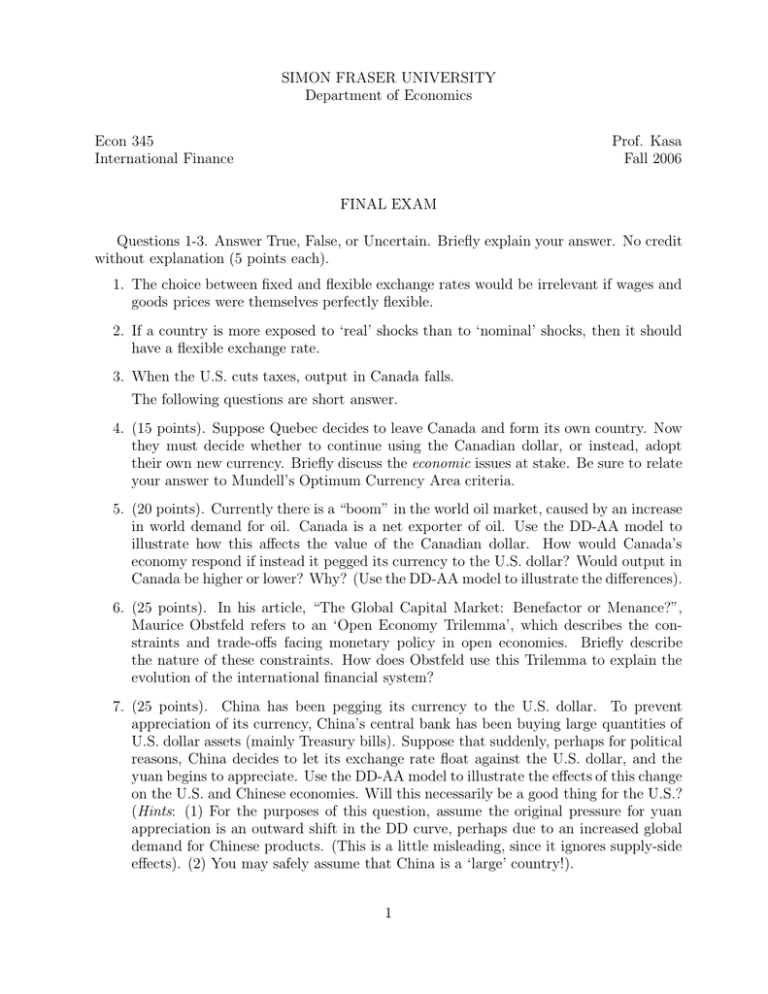
SIMON FRASER UNIVERSITY Department of Economics Econ 345 International Finance Prof. Kasa Fall 2006 FINAL EXAM Questions 1-3. Answer True, False, or Uncertain. Briefly explain your answer. No credit without explanation (5 points each). 1. The choice between fixed and flexible exchange rates would be irrelevant if wages and goods prices were themselves perfectly flexible. 2. If a country is more exposed to ‘real’ shocks than to ‘nominal’ shocks, then it should have a flexible exchange rate. 3. When the U.S. cuts taxes, output in Canada falls. The following questions are short answer. 4. (15 points). Suppose Quebec decides to leave Canada and form its own country. Now they must decide whether to continue using the Canadian dollar, or instead, adopt their own new currency. Briefly discuss the economic issues at stake. Be sure to relate your answer to Mundell’s Optimum Currency Area criteria. 5. (20 points). Currently there is a “boom” in the world oil market, caused by an increase in world demand for oil. Canada is a net exporter of oil. Use the DD-AA model to illustrate how this affects the value of the Canadian dollar. How would Canada’s economy respond if instead it pegged its currency to the U.S. dollar? Would output in Canada be higher or lower? Why? (Use the DD-AA model to illustrate the differences). 6. (25 points). In his article, “The Global Capital Market: Benefactor or Menance?”, Maurice Obstfeld refers to an ‘Open Economy Trilemma’, which describes the constraints and trade-offs facing monetary policy in open economies. Briefly describe the nature of these constraints. How does Obstfeld use this Trilemma to explain the evolution of the international financial system? 7. (25 points). China has been pegging its currency to the U.S. dollar. To prevent appreciation of its currency, China’s central bank has been buying large quantities of U.S. dollar assets (mainly Treasury bills). Suppose that suddenly, perhaps for political reasons, China decides to let its exchange rate float against the U.S. dollar, and the yuan begins to appreciate. Use the DD-AA model to illustrate the effects of this change on the U.S. and Chinese economies. Will this necessarily be a good thing for the U.S.? (Hints: (1) For the purposes of this question, assume the original pressure for yuan appreciation is an outward shift in the DD curve, perhaps due to an increased global demand for Chinese products. (This is a little misleading, since it ignores supply-side effects). (2) You may safely assume that China is a ‘large’ country!). 1
